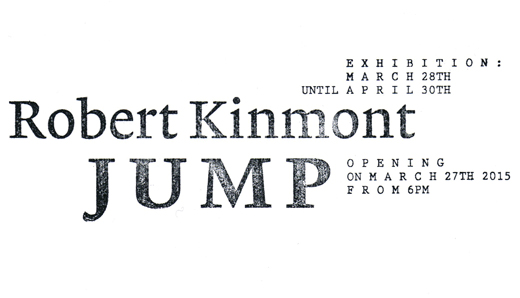Robert Kinmont. Jump
March 28 – May 30, 2015
Pfingstweidstrasse 23 / Welti-Furrer Areal, 8005 Zürich
Opening reception: Friday March 27, 6 – 8 pm
Everyday experience informs the art of Robert Kinmont's second exhibition at RaebervonStenglin , 'Jump'. Commonplace materials - dirt, wood, willows, toy gliders - meet with gleaming copper embellished with cursive script. Kinmont’s work describes a personal experience charged with care in which mineral and organic objects become specific, asserting separate identities and unlike energies.
Kinmont maintains that to make art you have to let go of something. It is a little bit like jumping. Yet these pieces advocate a groundedness and patience evidenced in the choice and handling of the materials and in the message. From the paradoxical relationship between jumping and waiting brings an animated tension shared by all the works: a sense of complexity that belies the apparent simplicity of their subject matter.
Sixteen Dirt Roads (2015) presents the gritty substances of a finite number of roads, each subtly different in color, composition and meaning; and each beautifully housed in copper boxes that contrast absolutely with their ashen dusts. Forks (2015) sees four wooden boxes lined in a row. Three of these contain numerous cut branches, such as might be used to make a slingshot or to divine water; the other fork units are of copper piping that have been cut and soldered together to masquerade as wooden forks — an attempt that comically underlines the inherent character of materials and inimitable intricacy of the natural world. Trying to Understand (2015) consists of three wooden boxes with twenty-four wooden gliders tessellated inside. A super 8 movie filmed in the 1970s depicts the artist’s arduous effort at 10,000 feet to achieve a successful glider flight, contrasting with the sedentary regiments of boxed gliders.
Such works recall Minimalism through their seriality, boxed forms and use of copper while relinquishing any reckoning of the world to the wind. The natural world intervenes in Kinmont's art, making definitions temporary and hierarchy nonsensical. Instead, as he tells it in a piece from this year, there is no place to rest for the artist — a statement in cursive copper, written forwards and back, upright and upside down that speaks of acceptance as much as of enlightenment.





































